Plastic plain bearings for solar technology from igus
5th November 2008
Source:
igus UK Limited
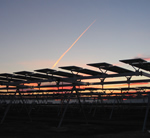
SolarOptimus tracking systems are the latest Conergy photovoltaic systems. The twin-axis drive systems are controlled by an astronomical algorithm which increases the production efficiency of eco-friendly energy by around 30%. To enable the systems to run maintenance-free over longer periods even under extreme weather conditions, Conergy decided to use igus components for all plain bearing applications as well as rod end bearings and linear units.
The renewable energy market is growing at an incredible rate. Conergy was founded in 1996 as a solar system integrator, and listed on the stock exchange since March 2005. Conergy has been able to increase its turnover since 2001 by an amazing 1830%, which makes Conergy one of the fastest growing technology companies in Europe.
Conergy provides complete system solutions for the production of renewable energy (wind, sun and biomass) all over the world – including project management, service and financing. In addition, the impressive growth rate is generated by the company increasingly developing and manufacturing their own products. For example, Conergy is currently investing around £200 million in building the most modern production facility in Europe for fully integrated solar wafer, cell and module production in Frankfurt. When completed, this facility will employ around 1000 people.
The question make or buy? is always analysed very carefully. Bernd Krabbe, head of the Engineering and Service department in the Global Technology Team (GTT) Electronics at the company's design headquarters: We look around on the market and evaluate whether or not there is a system already available that meets our high customer requirements. If this is not the case, we develop a product of our own. In the case of tracking systems for photovoltaic systems, the existing products apparently did not live up to the demanding requirements, because Conergy recently presented their new system: the SolarOptimus
This system has the task of always optimising the alignment of the photovoltaic generators – an investment that pays off for the operator, because energy production can be increased by more than 30% by twin-axis tracking systems. In Northern Europe, this optimum position detection always moves to the brightest spot in cloudy conditions. In Southern Europe, on the other hand, where the sky is often cloudless and there is a high brightness level, a system that keeps the photovoltaic modules at a right angle to sunray incidence on the basis of astronomical data is more effective.
This control principle is also used by the SolarOptimus, which was developed especially for the radiation-intensive southern Europe regions. Product manager Philipp Vanicek: The modules are moved in two horizontal axes according to an astronomical algorithm. During development of the frame system, the main focus was on durability and maintenance freedom, since the systems are often set up in remote areas without any on-site personnel. For this reason, the developers consciously eliminated complex drive systems, preferring to use components that have a straightforward but high-quality design. This applies to both the motors and the bearings. Bernd Krabbe, who is also project manager for SolarOptimus development: We explained our requirements to several suppliers of bearing systems and asked for their solution suggestions. It had to be considered that the set-up locations for the solar systems are often very dry; with the high levels of sand and fine dust. Another factor is the very wide temperature spectrum across which the bearings have to work perfectly.
In view of these criteria, the suggestions made by igus were the most convincing: All bearing points of the SolarOptimus are equipped with igus products. On the main axes of the frame systems, which are around 20 metres long, iglidur plastic bearings ensure low-friction and maintenance-free operation. The built-in solid lubricant of the high-performance polymer also guarantees that no lubricants have to be added. This is a central pre-condition for the long service life of the bearing under the given conditions.
With iglidur G, Conergy is using the all-rounder among the numerous iglidur® materials, which is suitable for pivoting and rotary movements at low to medium speed. The iglidur® G bearings can also operate in dirty, dusty conditions without any problem.
To reduce the strain on the drive systems, the Conergy development engineers have used linear bearings in the adjustment systems. Here too, high-performance polymers from igus® are used: The DryLin® linear plain bearings guarantee the exact linear motion of the axes. The DryLin® W bearing slides on a hard anodised alumnium rail profile, the combination gives low-friction running without stick/slip effects. igus® adapted the mounting plate for the moving components to the requirements of the Conergy developers. Sand and dust have no effect, whatsoever on this linear bearing: Any debris is simply pushed away by a snowplough effect without affecting the gliding properties.
Conergy decided to use igubal rod end bearings for the couplings which link the solar module carriers together. These connecting parts absorb high forces, have very good damping properties and weigh five times less then conventional metallic bearings. Even if the environment is polluted by fine or coarse dust, the rod end bearings remain maintenance-free. There is no danger of seizing or blocking, and the integrated solid lubricants ensure low friction with maximum abrasion resistance.
Trials with test sand from southern Spain
The drives of the module frames, which are responsible for the north-south alignment, apply a force of 6,800 N, the drive of the main frames for east-west tracking 10,000 N. The speed is low at max. 4 mm/s and the drive is moved through a maximum of one full revolution per day. Nevertheless, high demands are made on wear resistance, because the environmental conditions affect all components. This is why igus® carried out comprehensive series of tests for Conergy, and had extremely abrasive sand flown in from southern Spain, where the first SolarOptimus systems have been installed in the meantime. The (welcome) result: Even under conditions that are tougher than reality, the igus® bearings did not have to be replaced over the whole calculated service life of the SolarOptimus. This also applies to the UV resistance of the plastic as well as the wide temperature range and the humidity.
In the meantime, the first SolarOptimus systems have been installed for some months now in practical operation in southern Spain – with all the evidence pointing to the calculated increased yield being achieved by the astronomically supported tracking. After overall completion, 800 movable systems will be producing eco-friendly solar energy at this location and feeding it into the power network. In addition, Conergy has already planned several other projects with larger quantities of tracking systems. Bernd Krabbe: We have already sold SolarOptimus systems with an overall capacity of 13 MW.
igus® is accompanying this welcome development not only as a supplier, but also with customer-specific optimisation of the bearing points. This reduces production costs for larger quantities, and the dynamic development of Conergy leaves no room for doubt about larger quantities being required.
Conergy provides complete system solutions for the production of renewable energy (wind, sun and biomass) all over the world – including project management, service and financing. In addition, the impressive growth rate is generated by the company increasingly developing and manufacturing their own products. For example, Conergy is currently investing around £200 million in building the most modern production facility in Europe for fully integrated solar wafer, cell and module production in Frankfurt. When completed, this facility will employ around 1000 people.
The question make or buy? is always analysed very carefully. Bernd Krabbe, head of the Engineering and Service department in the Global Technology Team (GTT) Electronics at the company's design headquarters: We look around on the market and evaluate whether or not there is a system already available that meets our high customer requirements. If this is not the case, we develop a product of our own. In the case of tracking systems for photovoltaic systems, the existing products apparently did not live up to the demanding requirements, because Conergy recently presented their new system: the SolarOptimus
This system has the task of always optimising the alignment of the photovoltaic generators – an investment that pays off for the operator, because energy production can be increased by more than 30% by twin-axis tracking systems. In Northern Europe, this optimum position detection always moves to the brightest spot in cloudy conditions. In Southern Europe, on the other hand, where the sky is often cloudless and there is a high brightness level, a system that keeps the photovoltaic modules at a right angle to sunray incidence on the basis of astronomical data is more effective.
This control principle is also used by the SolarOptimus, which was developed especially for the radiation-intensive southern Europe regions. Product manager Philipp Vanicek: The modules are moved in two horizontal axes according to an astronomical algorithm. During development of the frame system, the main focus was on durability and maintenance freedom, since the systems are often set up in remote areas without any on-site personnel. For this reason, the developers consciously eliminated complex drive systems, preferring to use components that have a straightforward but high-quality design. This applies to both the motors and the bearings. Bernd Krabbe, who is also project manager for SolarOptimus development: We explained our requirements to several suppliers of bearing systems and asked for their solution suggestions. It had to be considered that the set-up locations for the solar systems are often very dry; with the high levels of sand and fine dust. Another factor is the very wide temperature spectrum across which the bearings have to work perfectly.
In view of these criteria, the suggestions made by igus were the most convincing: All bearing points of the SolarOptimus are equipped with igus products. On the main axes of the frame systems, which are around 20 metres long, iglidur plastic bearings ensure low-friction and maintenance-free operation. The built-in solid lubricant of the high-performance polymer also guarantees that no lubricants have to be added. This is a central pre-condition for the long service life of the bearing under the given conditions.
With iglidur G, Conergy is using the all-rounder among the numerous iglidur® materials, which is suitable for pivoting and rotary movements at low to medium speed. The iglidur® G bearings can also operate in dirty, dusty conditions without any problem.
To reduce the strain on the drive systems, the Conergy development engineers have used linear bearings in the adjustment systems. Here too, high-performance polymers from igus® are used: The DryLin® linear plain bearings guarantee the exact linear motion of the axes. The DryLin® W bearing slides on a hard anodised alumnium rail profile, the combination gives low-friction running without stick/slip effects. igus® adapted the mounting plate for the moving components to the requirements of the Conergy developers. Sand and dust have no effect, whatsoever on this linear bearing: Any debris is simply pushed away by a snowplough effect without affecting the gliding properties.
Conergy decided to use igubal rod end bearings for the couplings which link the solar module carriers together. These connecting parts absorb high forces, have very good damping properties and weigh five times less then conventional metallic bearings. Even if the environment is polluted by fine or coarse dust, the rod end bearings remain maintenance-free. There is no danger of seizing or blocking, and the integrated solid lubricants ensure low friction with maximum abrasion resistance.
Trials with test sand from southern Spain
The drives of the module frames, which are responsible for the north-south alignment, apply a force of 6,800 N, the drive of the main frames for east-west tracking 10,000 N. The speed is low at max. 4 mm/s and the drive is moved through a maximum of one full revolution per day. Nevertheless, high demands are made on wear resistance, because the environmental conditions affect all components. This is why igus® carried out comprehensive series of tests for Conergy, and had extremely abrasive sand flown in from southern Spain, where the first SolarOptimus systems have been installed in the meantime. The (welcome) result: Even under conditions that are tougher than reality, the igus® bearings did not have to be replaced over the whole calculated service life of the SolarOptimus. This also applies to the UV resistance of the plastic as well as the wide temperature range and the humidity.
In the meantime, the first SolarOptimus systems have been installed for some months now in practical operation in southern Spain – with all the evidence pointing to the calculated increased yield being achieved by the astronomically supported tracking. After overall completion, 800 movable systems will be producing eco-friendly solar energy at this location and feeding it into the power network. In addition, Conergy has already planned several other projects with larger quantities of tracking systems. Bernd Krabbe: We have already sold SolarOptimus systems with an overall capacity of 13 MW.
igus® is accompanying this welcome development not only as a supplier, but also with customer-specific optimisation of the bearing points. This reduces production costs for larger quantities, and the dynamic development of Conergy leaves no room for doubt about larger quantities being required.
Similar articles
More from igus UK Limited
- From garage business to world leader: igus founders celebrate 90th birthday 22nd June 2021
- VOTW - Metal out plastic in! 10th June 2021
- igus robot works alongside agri-tech startup 18th May 2021
- Tribo-polymers increase machine service life and efficiency 10th May 2021

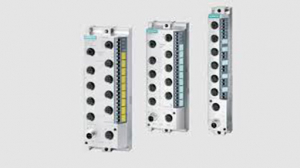
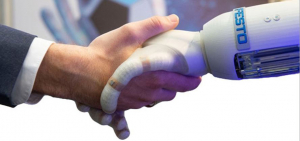
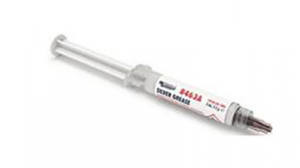
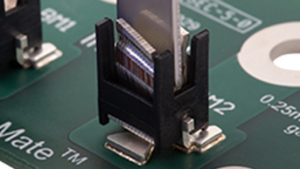







Write a comment
No comments